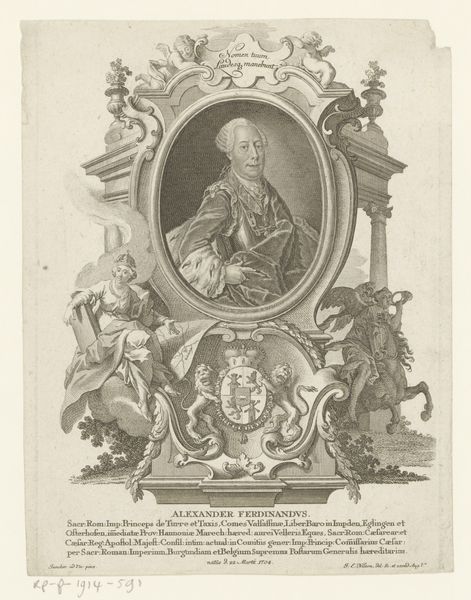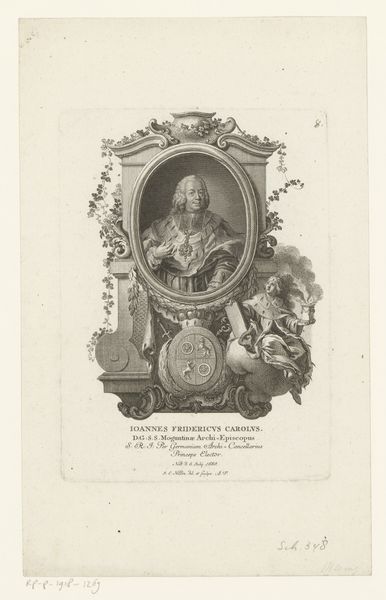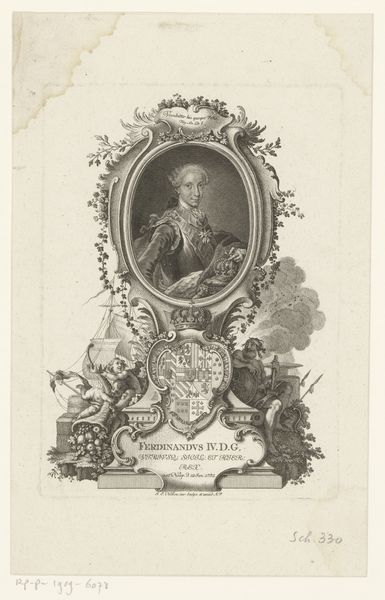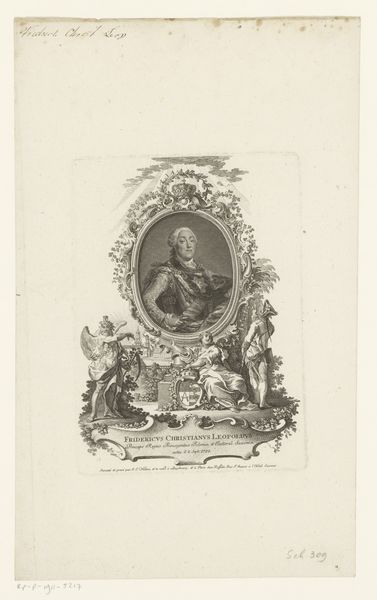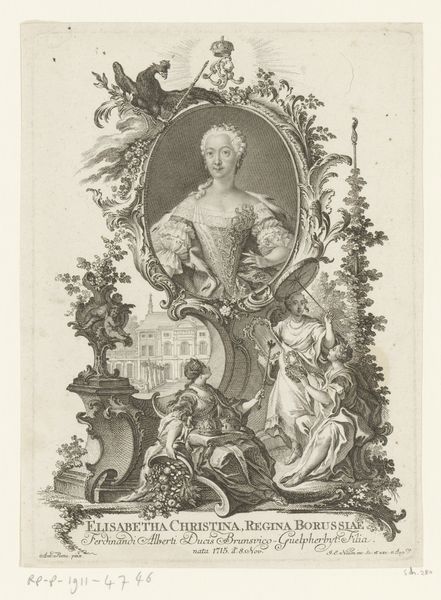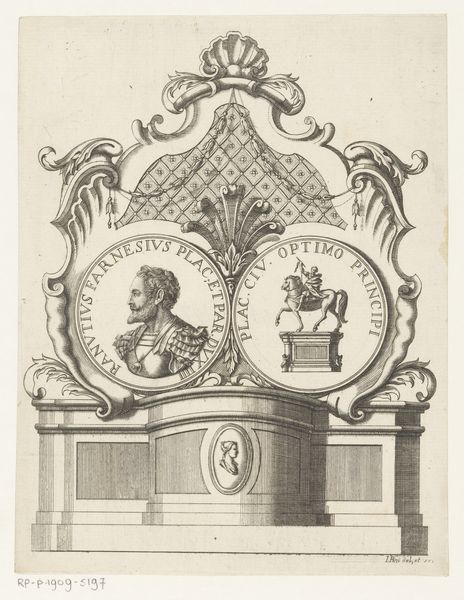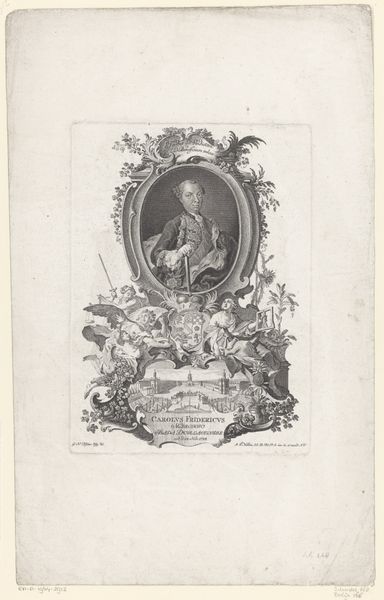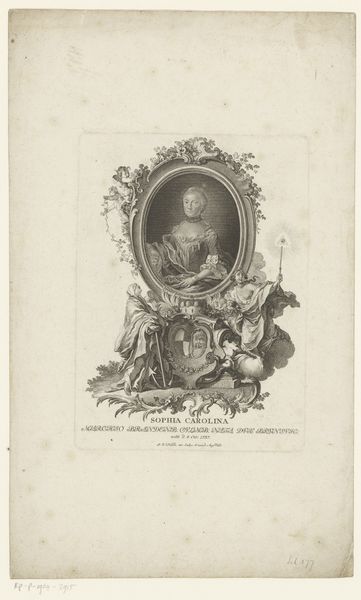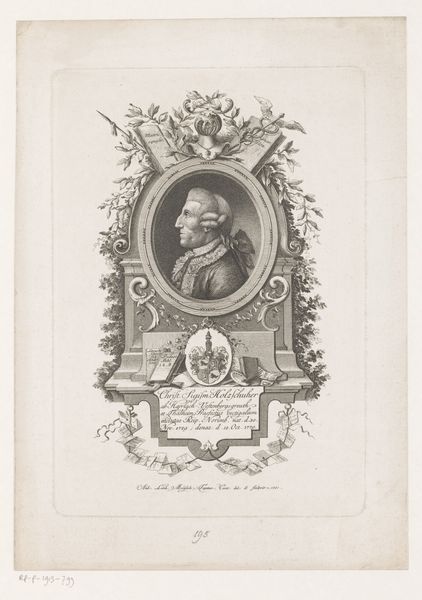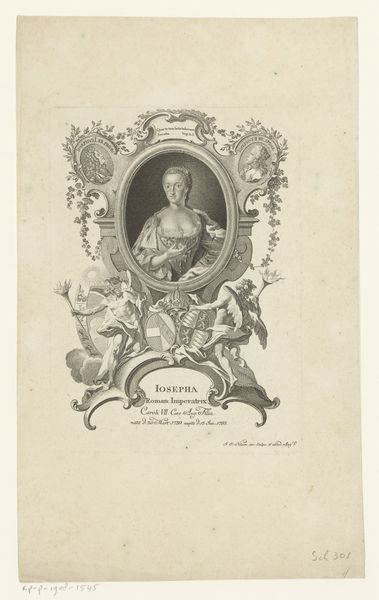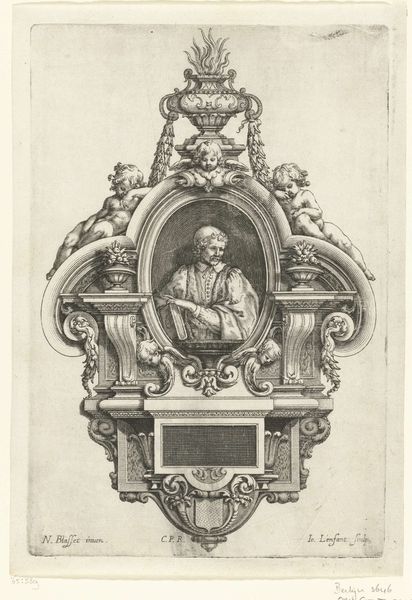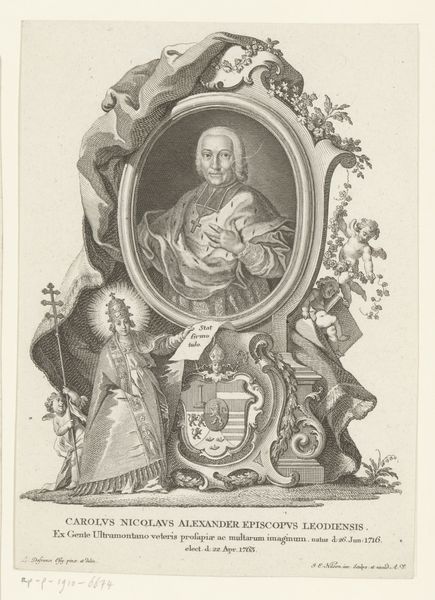
Dimensions: height 225 mm, width 162 mm
Copyright: Rijks Museum: Open Domain
Editor: So, this engraving, "Portret van Clemens Wenceslaus van Saksen" by Johann Esaias Nilson, dates to somewhere between 1739 and 1788. It’s quite detailed. The rendering looks pretty clean. How do you interpret this work? Curator: Looking at the materiality of this print, we must consider its purpose in relation to labor and consumption. Engravings like this facilitated the dissemination of images to a wider audience than painted portraits. How does the act of replicating and distributing the image of Clemens Wenceslaus impact our understanding of his power and influence? Editor: That's a good point. Making his image reproducible certainly amplifies his reach, a form of branding, I guess. Curator: Precisely. The very act of creating and distributing this engraving implicates various forms of labor – the engraver's skill, the printer's craft, the distributor's network. How does focusing on this material process challenge our perception of this artwork as solely a representation of nobility? And we should reflect on what it means that these portraits circulate at a time when the printing industry and the technologies and skill associated with printmaking were really developed and organized. Editor: It seems that understanding the socio-economic context of its creation really unlocks a deeper appreciation. I hadn't really considered who made these things other than the artist themselves. Curator: Thinking about who has access to artmaking helps demystify some of its impact on our cultural values. Editor: That's a fascinating way to view it, really gives a new lens for observing even the artistic merit of the artwork. Thanks. Curator: Indeed, and it reveals the often unseen labor underpinning these seemingly simple prints. A productive exchange, I think.
Comments
No comments
Be the first to comment and join the conversation on the ultimate creative platform.
